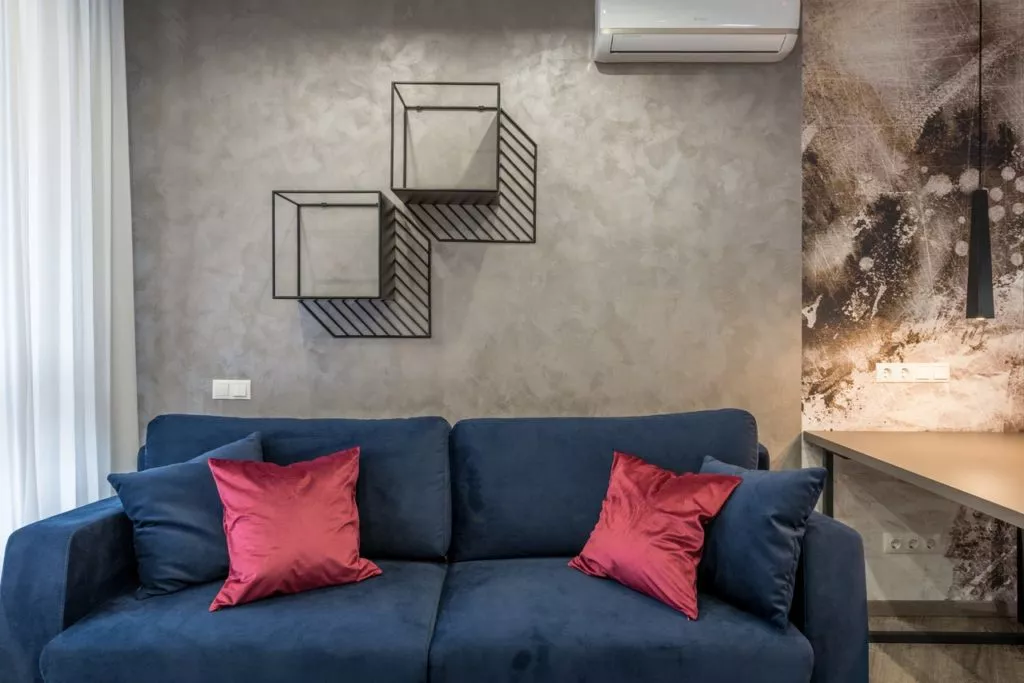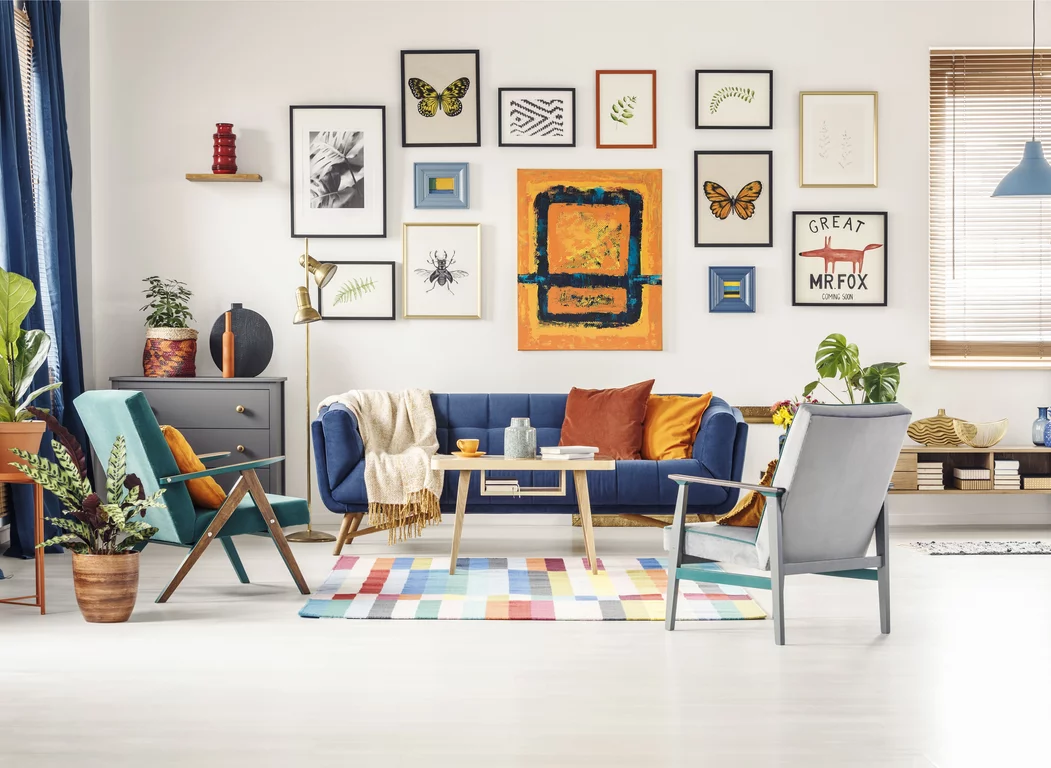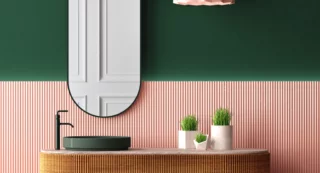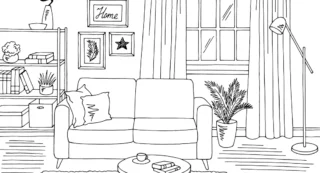Hanging Wall Art Guide: 7 Important Rules
When you’re choosing and hanging wall art, you need to consider the space you’re hanging it in and how it will affect the overall visual appearance of that space. Whether you’ve gone for an expensive piece bought at auction or chosen more cost-effective, ready-to-hang wall art, where and how you hang it can make a big difference to a room. Here we’ve put together a handy set of guidelines to help you make the right choice.
1. Hanging wall art to suit your décor
One of the most important things you need to consider is how your artwork will match your existing décor. If you have a colour scheme in a particular room, then choosing artwork that blends in with it can create a tremendous harmonising effect. Alternatively, you could make your wall art stand out by having it clash with your décor. Use a colour wheel to see which colours are opposites, and choose abstract canvas art, which will be a real showstopper in contrast to your furniture and wall colours.
2. Choose art to scale
When you choose your artwork, think about the size of the space. For instance, if you only have a very small living room, you don’t want enormous tapestry wall art dominating the space. Smaller rooms are better suited to moderately sized pieces or montages. Larger rooms and corridors can often take more prominent types of hanging artwork.
See more about the picture frame sizes you can choose

3. Start from the left when hanging wall art
If you’re hanging a group of pictures, you need to consider how they are spread out. Experts say that the eye is naturally drawn to the left since we read from left to right in the West. That means it’s best to hang larger pieces at the bottom left-hand corner of a group display, then work your way up with medium and smaller-sized pictures leading to the right. This works well if you want to create a quirky setting of abstract canvas pictures for a nice scattered effect.
4. Plan group arrangements
On a similar note, if you’re thinking about group arrangements, make sure you plan in advance. You don’t want to be hammering picture hooks into the walls only to change your mind once the artwork is up. When thinking about how to hang canvas art, it’s worth getting some cardboard and tracing a template of each piece. Then you can set them out in different layouts until you’re happy with the arrangement. Maybe some black square picture frames will help.

5. Keep more personal artwork for the bedroom
We all have more personal home wall art, such as wedding photos or baby shoots. These more intimate pieces are best kept for the privacy of the bedroom. For more formal spaces such as the dining or living room, it’s best to go for neutral hanging wall art. For example, hanging tapestry wall art in a dining room adds an air of sophistication. Fabric wall hanging art in the living room brings an added touch of cosiness. Meanwhile, you might think about hanging children’s artwork in the kitchen since it’s often considered the heart of the family home.
Read more about how to choose the wall art for each room in your home
6. Mix and match hanging wall art
Not all wall art has to be framed. Mixing and matching pieces can be an excellent way to add interest to a room. You might try mixing framed wall hanging art with plates, mirrors or natural canvas wall art to create a real feature wall. It all depends on the size of your space and how well suited it is to that clash of artworks.
7. Go for odd numbers
If you’re creating a group of artworks, it might be best to arrange them in odd numbers. Place a large piece in the middle flanked by smaller pieces. For instance, you might have one large canvas artwork in the centre and two smaller ones on either side of it. This creates a more balanced appearance. It’s a bit more formal than the mixed approach or the rule of starting from the left. Nevertheless, it does make for a neat, orderly arrangement that works well in smaller spaces or more formal settings.
Overall, you need to think about the size of your space and how you want your artwork to sit within it. In other words, do you want your artwork to be an attractive accessory or the star of the show? Either way, plan in advance, and with the right pieces, you could transform your home.





